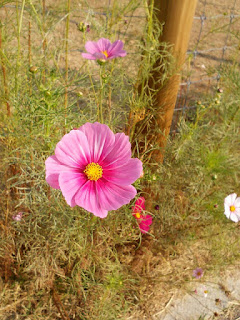If you like flowering shrubs that bloom in the spring then you should grow the Forsythia. This shrub is not fragrant however it does produce branches that are covered with flower buds in late winter/ very early spring. This flowering shrub is the first to bloom in my yard. When the buds bloom the bright yellow flowers are so cheerful.
This showy flowering shrub can be grown as a hedge, free-standing accent plant, or foundation plant. This shrub is long-lived and the flowers can be cut for lovely centerpieces for your home. If you plant it as a hedge plant the forsythia is six feet apart.
I grew up with Northern Gold Forsythias in my backyard so when I moved back to the Midwest I planted this shrub in my yard, I joined an organization and received two bare roots that were four inches tall. The shrub took years to grow and to produce multiple branches. Of course, that was 8 years ago and now my forsythias are mature. My shrub is 10 feet in height with a similar spread.
 |
| Growing wild forsythia should be pruned after the spring bloom to keep in shape. |
Forsythias are not hard to grow, as long as you plant them in full sun (at least six hours daily). Choose a growing site that has well-drained soil. I recommend growing this flowering hedge where you can enjoy seeing the showy flowers.
To prevent this shrub from getting out of control you would prune it in the spring after it has bloomed. If you prune in the summer or the fall then you run the risk of having fewer blooms the following season.
There are many varieties of forsythia some grow best in cold climates others are hardy when grown in zone 3 to 9. Learn more about pruning your forsythia here















